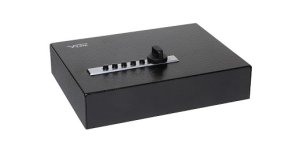My son right now is a toddler. He has figured out how to turn on the television, dial the phone (he called 911 which was fun), the list goes on. While I might buy that it would give you a little time, a DA pull or a manual safety is in no way a means to prevent a child from having an unintended discharge and no replacement for a gun cabinet, quick assess safe, true safe, etc. This isn't aided by the fact that pistol safeties aren't meant to be puzzle pieces. They're meant to be at least mildly intuitive.We have moved away from long trigger pulls, which I don't think is a good thing. My home protection gun is a Beretta 92 and I love it. DA and a safety. I was using a revolver until one night I woke up to a loud noise and was getting it out of the holster half asleep and realized my 1/2 asleep state was probably more dangerous than the noise. While I didn't have an ND or anything that night I knew the DA wasn't enough in that type of situation for me so I went with the beretta.
I have kids so god forbid they ever get their hands on a gun, wrestle me while I am carrying, etc. that safety is a big deal for me. Its one of the reasons I love my current mp bodyguard. Its DA, hammer fired, and has a safety. I think its great as a CCW gun. The issue I have with it is that while its great for a close encounter, its not going to do much good in any other situation.
As for the DA pull, I knew a man years ago who claimed to work for S&W when they were considering putting in the key locks in revolvers. The prevailing wisdom at the time was a child couldn't operate the DA trigger. They did a test with a number of children and an inert revolver to see if they could. The result? The kids used two hands, without prodding from anyone. Kids are smart.
At the end of the day how a person raises his child is his business. I just get very leery when I hear of people thinking a DA pull or manual safety can stop a child. I too wrestle with my son. When I do the firearm comes off and goes in a secure location. At least a holster by itself should have some level of retention that should prevent a firearm from just falling out, even if just friction.
Sent from my Pixel 2 using Tapatalk

